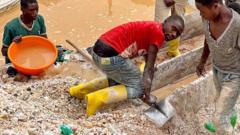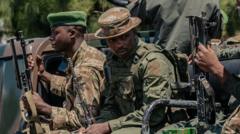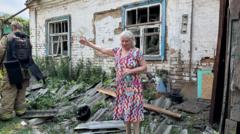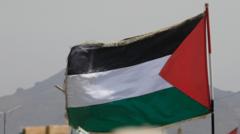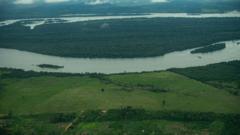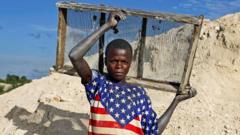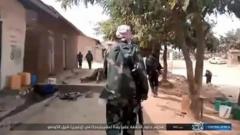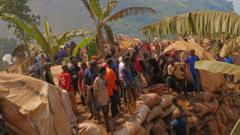In a rare glimpse into the Rubaya mine in eastern Democratic Republic of Congo, the BBC sheds light on the lives of more than 10,000 miners who toil daily to extract coltan, a critical mineral for manufacturing mobile phones and various electronic devices. The site, controlled by M23 rebels, has become a focal point in the complex interplay between local economies and international interests.
The Rubaya mine, located about 60 kilometers from Goma, is characterized by a sprawling network of pits and tunnels serviced by a workforce of miners using basic tools. Many miners describe their grueling experience as both a source of income and a way of life, despite the associated dangers of high temperatures and toxic gases underground. “Mining has really helped me,” shares Peter Osiasi, a miner who has relied on this arduous job to support his growing family.
Control of the Rubaya mine is pivotal, as it hosts approximately 15% of the world’s coltan supply, attracting attention from global investors eager to tap into its wealth. Yet, the region's tumultuous history of conflict complicates the situation. The M23 rebel group, which has claimed extensive territory in eastern Congo, was not part of a recent peace agreement involving the Congolese government and Rwanda, adding layers of complexity to an already fragile situation.
Patrice Musafiri, the mine supervisor, notes improvements in safety since the rebels took charge, which ostensibly allows miners to work without immediate fear of violence. However, the miners face low wages despite working in conditions that demand great physical sacrifice, often expressing hope for better pay and living conditions.
As U.S. investment interest grows, there are calls for foreign companies to not only invest in mineral extraction but also to contribute to local development through infrastructure, education, and healthcare. Such improvements are seen as vital to enhancing the lives of those working at the mine and to potentially stabilizing a region long plagued by conflict.
While negotiations for peace continue, there remains an urgent need to address the underlying issues driving conflict in the area. Local miners, like Osiasi, voice a collective plea for peace, hoping that a resolution might finally end the cycle of violence and displacement that has marked their lives for decades. “We want stability, so we can work hard without fear,” he says, embodying the aspirations of his community for a brighter and more secure future.

